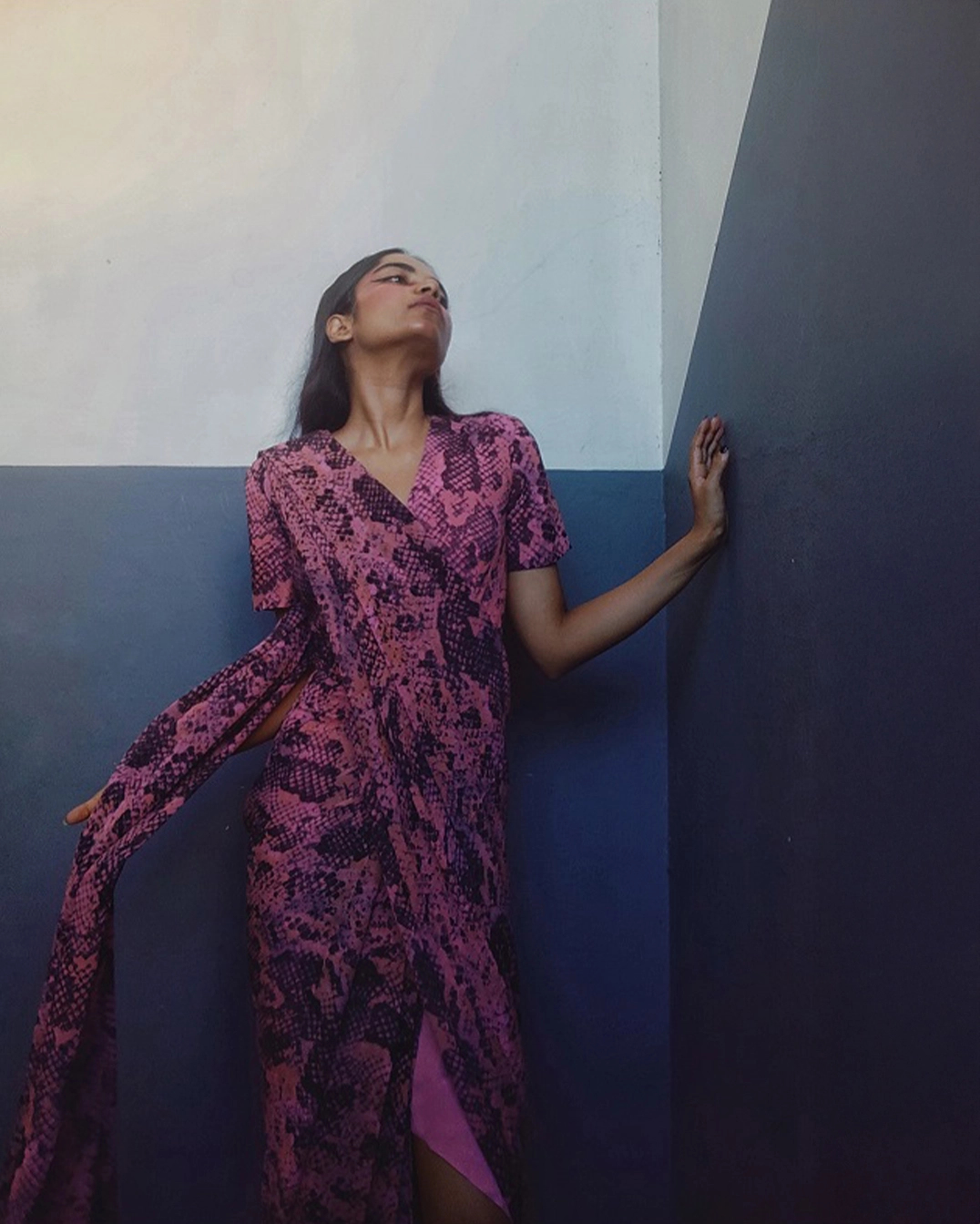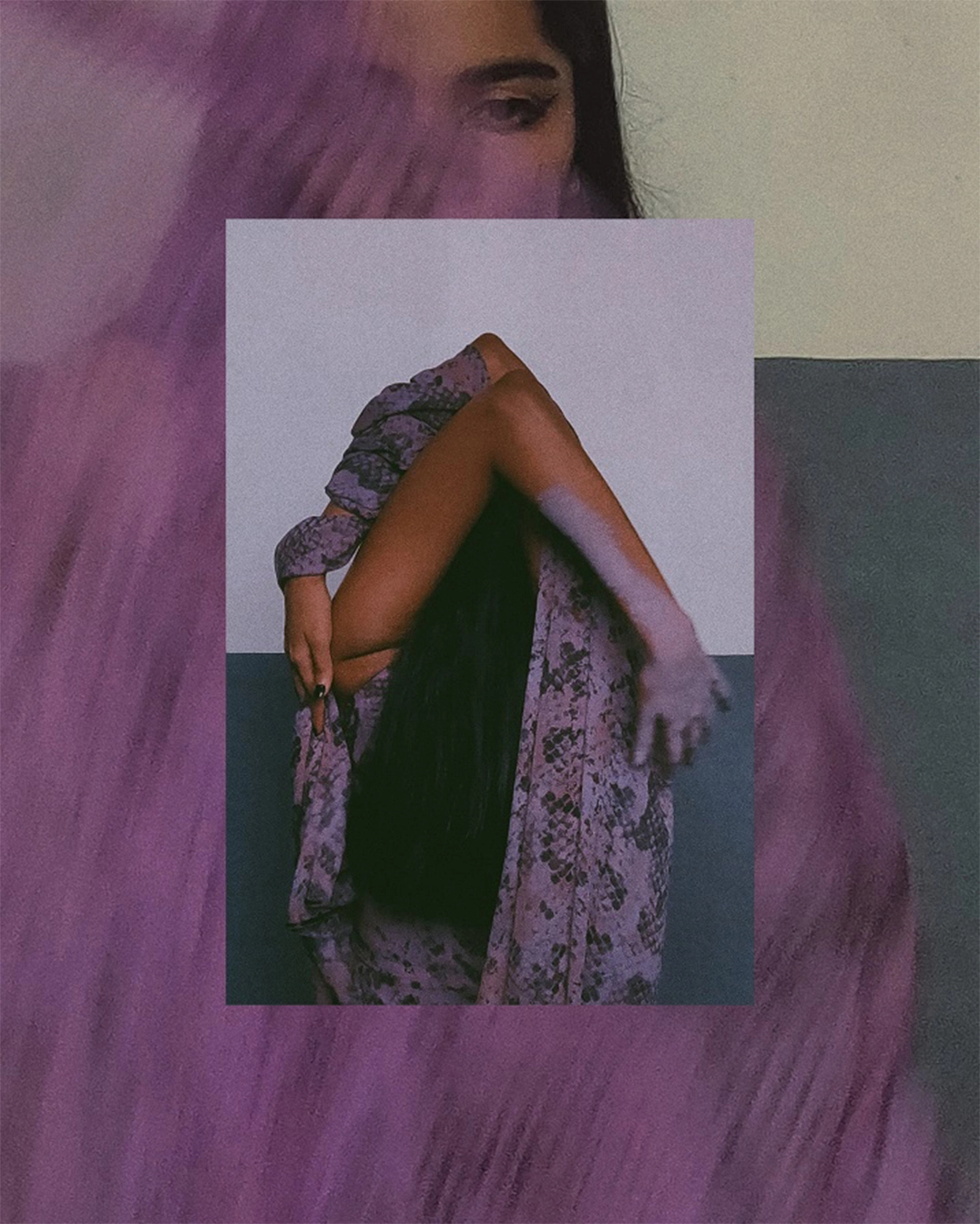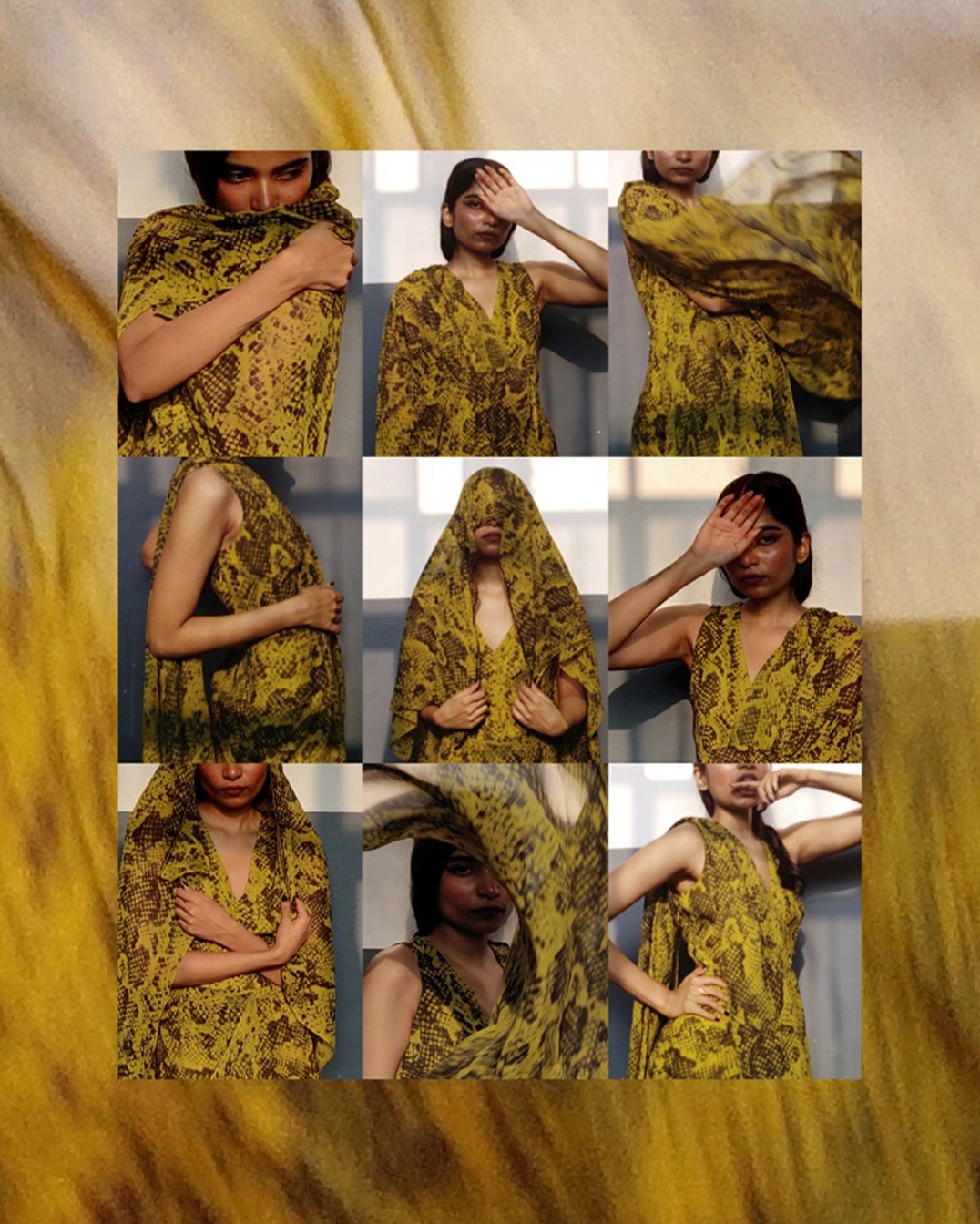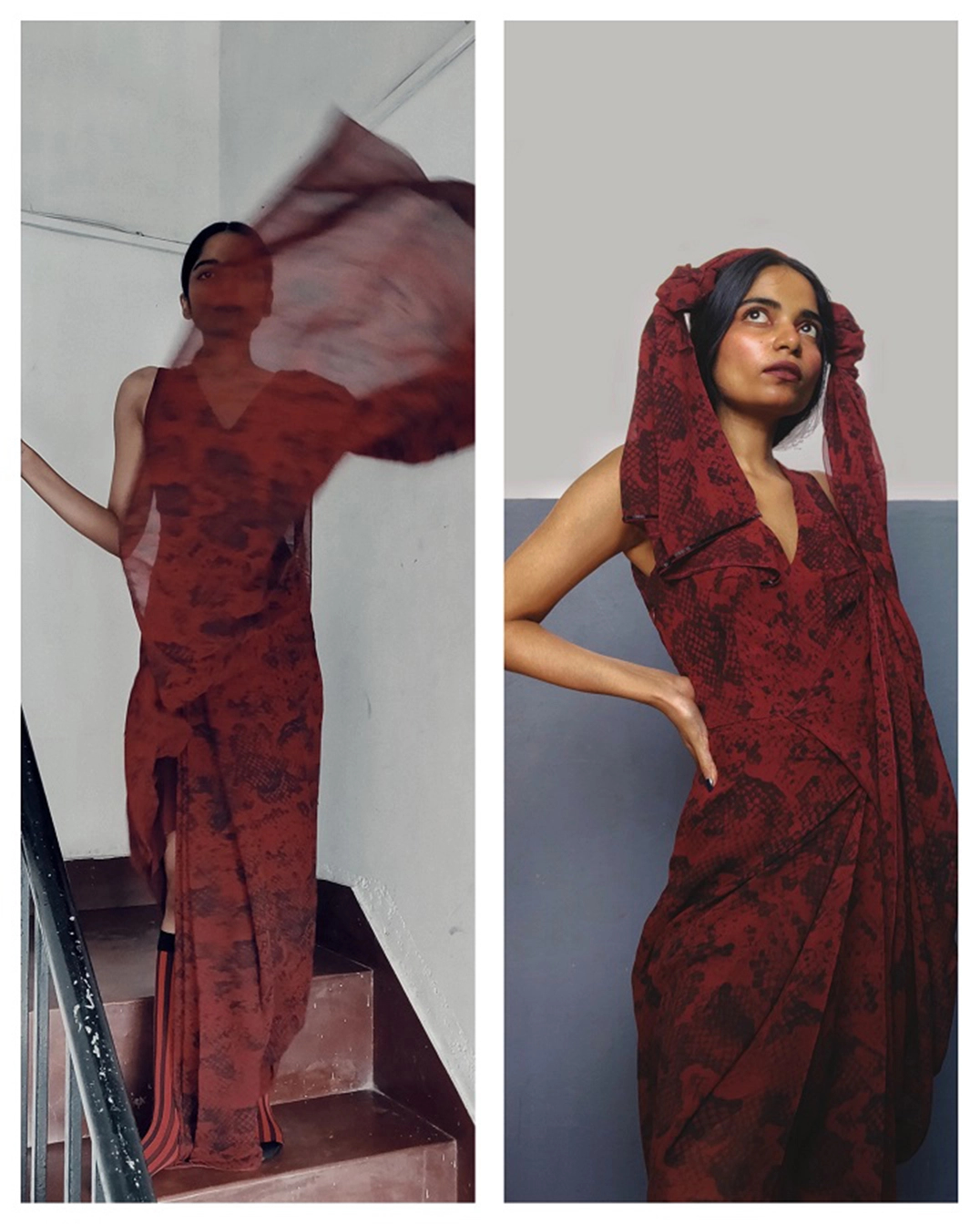
The online store Kumari Sari — co-founded by Rashmi Varma and Malika Verma Kashyap — presents the upcycled pre-stitched sari dress as another way to modernise the six-yard fabric which is being reclaimed and reinvented by women looking to detach the garment from its traditional connotations. And the sari is finding fresh representation worldwide, as can be seen through the brand’s “muses” – Kochi-based Gayathri Mohan, stylist, creative director and face of Kumari Sari’s limited-edition Silk Sssnake campaign and London-based model, blogger and journalist Simran Randhawa.
They share their thoughts in an exclusive with Verve…
Gayathri Mohan

On Discovering Her Passion
Growing up, I was always influenced by fashion, whether it was my grandmother’s saris or my mother’s dupattas. I was also fascinated with photography, which is my father’s profession. After finishing school, I joined NIFT Chennai in the hope of becoming a designer, but I dropped out after my second year. Although I worked as a freelance illustrator for the next three years, I wasn’t sure of what I actually wanted to do at that point in my life. One day, I decided to play around with my mother’s old sari – I styled it with one of my leather jackets and asked my father to take photos of me. I ended up uploading them on Instagram, and that’s how I discovered my passion for styling; I’ve been working as a stylist ever since.
On Individuality
During the pandemic, I started to experiment with make-up, photography and self-portraits. I see my Instagram profile as a potential portfolio and am constantly experimenting with the styling, editing and photography. That’s something I’ve become conscious of over the past few years of being on the platform. Fashion and style are not something you can work out with a rule book; I like to think they’re subjective. Each and every one of us has a different take, and that’s what brings out the individuality in style. You just have to own it with confidence. I communicate what I want to say through the content that I create, the aesthetic that I portray through my photos. I do not believe in the agenda of always having to have a meaning or motive behind the art you put out. It’s just one’s creative expression. Lately, I’ve been noticing a lot of censorship in terms of creative expression and speech. Having developed a community through social media, I’ve experienced an overwhelming amount of support. As an artist, that’s one of the greatest achievements. This has really helped me grow, improve, learn and experiment. It has also given me a greater sense of motivation.

On Working From Home
I do think it’s important to experience the change you feel once you start working in a mainstream city, but in the current climate, I guess anyone can work from home and share their talent and showcase it across the country. This is a major change that I have noticed in the creative industry. In terms of collaborative projects, I’m not too picky, but it’s always a plus point when I get creative freedom.
On Chasing Trends
It’s good to be aware of what’s trending, but I hate sticking to trends. Fashion and style are constantly changing, especially because of how fast social media works. So, chasing every trend and trying to stay on top of every style is both tiring and irrelevant. I was initially not comfortable with modelling, but since I started experimenting with self-portraits, I have been working on not just how I look but also the process as a whole. It’s definitely easier when I’m not doing everything at once, but I really enjoy taking control of the entire creative process.

On Collaborating With Kumari Sari
My collaboration with Kumari Sari has been one of my most favourite experiences. I prefer it when clients know what they want, and in this case, they did. At the same time, they gave me a generous amount of creative freedom. I love how versatile the colours and silhouettes are. They are perfect for the modern woman or anyone who can’t drape a sari but wants to wear one. You can play around with how you want to drape your body.
Artists She Follows
Shilo Shiv Suleman, Aryan D. Nair, Young Emperors and Kshitij Kankaria.
Simran Randhawa
On Starting Her Blog
I got scouted for modelling at 17, started writing at 19 to express myself and then started a blog, which is where my writing really took off. I’ve always loved stories, thinking about people and communities – and writing was a medium through which I could express and share that. My education is the reason I started writing! I’d sit in sociology class in college learning about things that really informed my existence. I wondered why people weren’t talking about these things, so I decided to start my blog to open up a dialogue in a relatable way. Then, when I went to university, I experienced a lot of racism and classism, which also informed the conversations I was having.
On Her Journey
When I first gained popularity on Instagram, which was around three years ago, it was because I had been sharing my exploration of my identity – that of a young Punjabi girl living in London. It was a lot about how I was trying to mix the two cultures, through style mainly, and what that looked like for me at the time. Obviously, my style has shifted and grown since, as people naturally tend to grow, but my decision to post was never consciously made to increase followers. It was a natural extension of me sharing my journey and of others deciding that it resonated with them.
I’d say my art has provided me with a platform, which I then use to address social issues. At the same time, much of my writing is informed by social issues – what is going on that’s relevant – and lived experiences.
On Individuality And Style
Through my work, I try to portray a woman living life on her own terms and exploring it at her own pace, without cultural ideas or shame holding her back. My identity naturally shines through my work because I am creating it through my lens of the world. It’s important to know what you want to say because you need to see where you fit into the larger picture.
My personal style is heavily influenced by just living in London and the things that I grew up with and around – the street style, streetwear influences, certain Nike silhouettes I first wore, what’s available to me, the brands my friends create and what’s in trend. Developing style is a work in progress, and the things I liked a year ago may not resonate with me now, so I’m always trying to buy timeless pieces and sell old stuff online.
On Affiliated Partnerships
When agencies told me that I needed to post every day or to affiliate links etc, it did not appeal to me as I never started on Instagram with the idea to grow an audience. That happened organically, and so it felt wrong to hyper-capitalise my community. I do paid partnerships, but only if it’s a brand I genuinely use, love and have a relationship with.
On Documenting Indian Food And Fashion
The food element on my Instagram account is a semi-recent addition that goes back to my work’s storytelling aspect; I find it fascinating that certain dishes, foods and ingredients can bring communities together, represent them and tell their ancestral stories. In the West, a lot of Indian food is grouped together with no space for nuance, therefore reclaiming our narratives, ancestry and foods is so important. Our regional dishes tell stories about our communities and experiences; sharing that personal side of food is vital archival work – to not allow South Asian foods to just be termed as “korma” or “jalfrezi”. Similar sentiments apply to fashion. In London, if you want “Indian clothes”, there are only a handful of places you can go to. Of course, the selection here is limited and based solely on what the buyers think the South Asian community wants; there’s no showcasing of Indian handcrafted clothing or embroidery. It’s crucial not to forget the stories and work of the craftsmen who are keeping traditional Indian methods alive.
On The Kumari Sari
When I put on the Kumari Sari for the first time, I remember being very pleasantly surprised. As mentioned before, the selection of traditional clothes here is rather limited, so having something which felt more aligned to my sense of style was refreshing. Also, I’m useless at pleating, so only having to drape is a dream!